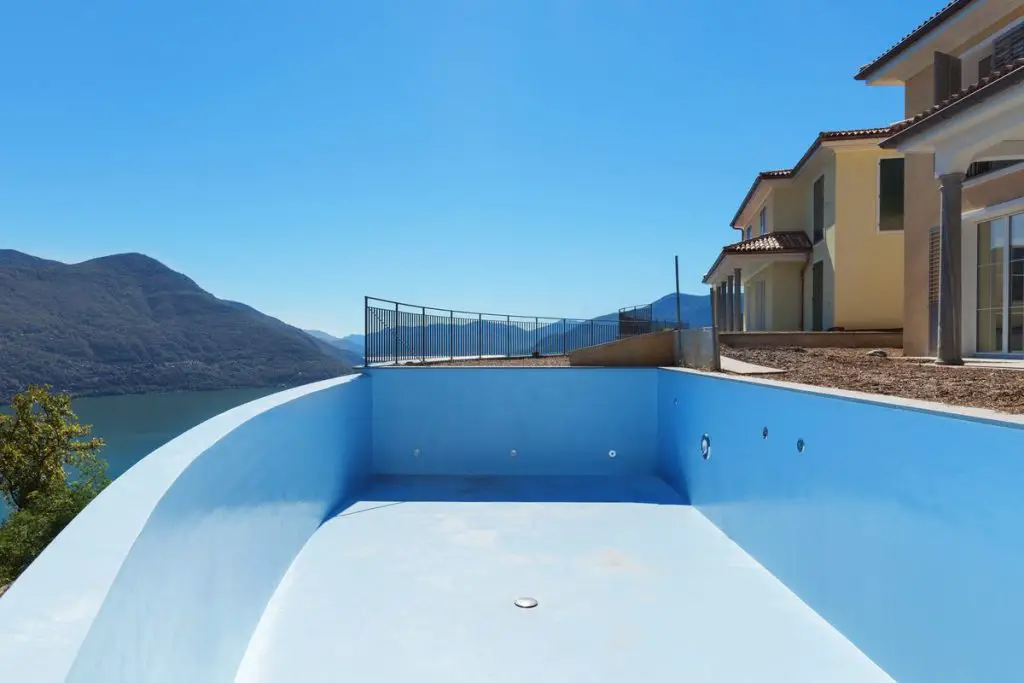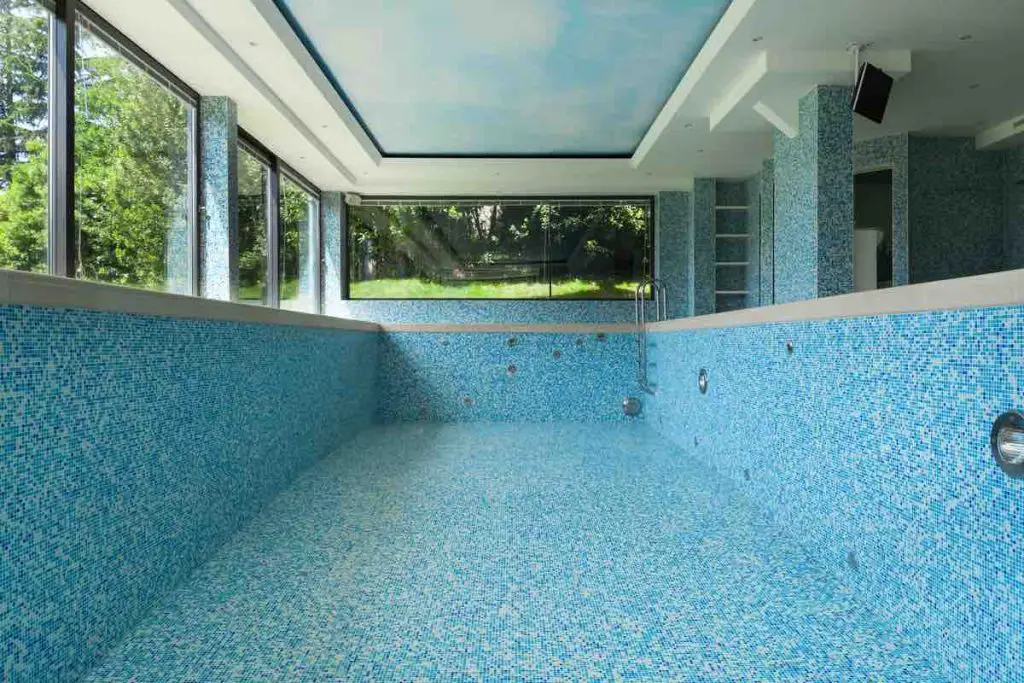As winter weather approaches, you might wonder how to best care for your concrete pool. Some say to drain the pool, while others say don’t drain a concrete pool. Understanding the proper winter care for your swimming pool can ensure it is ready for use when the warm weather returns.
You should not drain a concrete pool for the winter. The pool water protects the liner, and the chemicals you add will maintain clean, algae-free water. Your pool will be ready for spring with very little intervention if you follow the proper steps to winterize the water.
You will only need to drain a concrete pool completely every ten to fifteen years. Keep reading to learn how winter can damage an empty pool, how to winterize the pool correctly for protection from the elements, and the benefits of proper winterization for your investment.

How Winter Affects an Empty Concrete Pool
Whether your pool is new or new to you, knowing the steps to take for winterizing a concrete pool can protect your investment. There are several ways an empty pool can sustain damage in the cold winter weather.
- An empty concrete pool can sustain liner damage. The water left in the pool typically protects the pool’s interior. It also keeps the liner clean, making for less work when you reopen the pool.
- Draining the water from a concrete pool means you will need a LOT of water to refill the pool in spring, costing you more money than you probably have to spend.
- Maintaining the recommended water level in the pool preserves the liner and prohibits liner shrinkage and cracking.
- Debris inevitably falls into the pool in the winter wind. The water in the pool offers protection from issues the weather can cause to your pool liner and surface.
- Leaving water in your pool minimizes the need for repairs when you reopen it, saving your money for other pool needs.
The Best Way to Winterize a Concrete Pool
Too little water in the swimming pool can compromise the integrity of the structure. When you remove the pool cover in spring, you shouldn’t face thousands of dollars in repairs. Following the proper steps to winterize your concrete pool can prevent hollow spots or cracks in the interior wall. Here are the steps for winterizing a concrete pool.
1. Check the Pool pH Balance
Checking the water chemistry of your swimming pool is a crucial first step in winterizing it correctly. When the chemicals are right in your pool, you can feel confident the pool will successfully survive the winter weather. Here are some possible problems you can face when your pool water is out of balance.
- Low pH levels can result in surface corrosion of the liner.
- High alkaline levels produce cloudy water that needs more chemicals to clear in the spring.
- Low calcium levels can cause plaster damage and surface etching.
To allow enough time to correct the water balance, start these applications.
- Raise the alkalinity to 150-170 ppm, which is high, but water loses alkalinity over time.
- Raise the calcium levels to above 220 ppm.
- Raise the pH to 7.8 because the water loses calcium over time.
- Add a shock product to take the water to between 1-3 ppm of chlorine.
- Add algaecide to prevent algae from growing in the pool water and clogging the pump.
2. Drain Some of the Water
You can cause significant damage to your concrete pool in winter if you drain all the water. Only drain enough to leave water sitting just below the jets and skimmer. You want no water to get into the pool pump. Check to ensure the water remains above the ground-level line.
3. Use a Standard Pool Closing Kit
Purchase a standard pool closing kit. It includes everything you need to prevent algae growth and possible staining when the pool is covered for winter. The algaecide, sequestering agent, scale preventive, and non-chlorine shock will make opening the pool in spring much less labor intensive.
This Youtube video explains how to use a pool closing kit:
4. Clean the Pool Filter
Cleaning the pool filter before you close your concrete pool for winter will preserve the filter’s life. When you disassemble the pool filter and clean the residue and debris from the filter and housing, your filter will be ready to operate in the spring.
5. Blow the Lines To Remove Water
Any water left behind in the lines will freeze and damage the water lines to the pool. Blowing out the plumbing lines is a three-step operation:
- Blow out the suction portion
- Blow out the equipment part
- Blow out the pressure side
6. Cover the Pool
A quality pool cover can be your pool’s best friend in winter. Not only will a pool cover keep the debris and dirt out of the pool, but the safety cover will also keep your children safe from the pool. You can also consider investing in a pool cover with a pump that senses when too much water collects on the surface and switches on to pump the water away.
7. Cut the Power
Cutting the power to your concrete pool is the final step in winterizing. Turning off the circuit breaker to the pool equipment can protect it from damage. You know how your pool works so you should take the precautions necessary to protect it from winter harm.

Conclusion
When you drain all the water from your pool, the freezing water on the surface can tear the liner. Keeping the right water level in your pool serves as protection for the interior and pool liner.
When you winterize the pool, you will minimize the work needed to reopen it in the spring. This procedure also protects the pool from equipment damage in the coldest season.
Don’t forget to check on your pool periodically during winter to ensure everything is still in good order.
Sources
- The Pool Doctor: Balancing Pool Water Prior to Winterization
- A1 Pools and Spas: Make Sure Your Pool has the Proper Water Level This Winter!
- Sutro: Pool closing kit use and tips
- Crystal Pools: Should You Drain Your Pool Every Winter?
- The Pool Factory: Winterize your Cartridge Filter
- Blue Haven Pools: How to Winterize Inground Pools in 12 Basic Steps
- Ultra Modern: How to Blow Out Your Pool Lines
